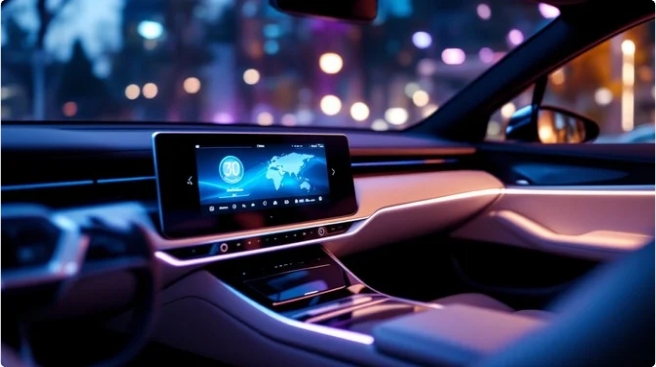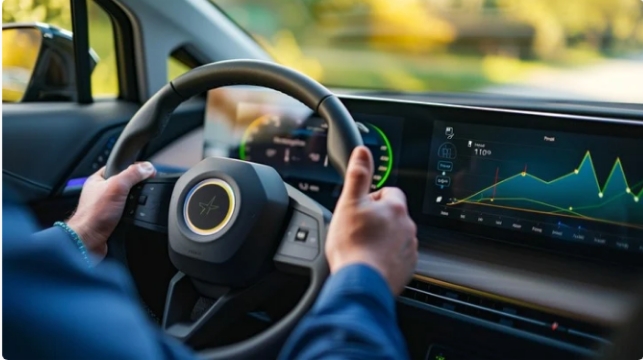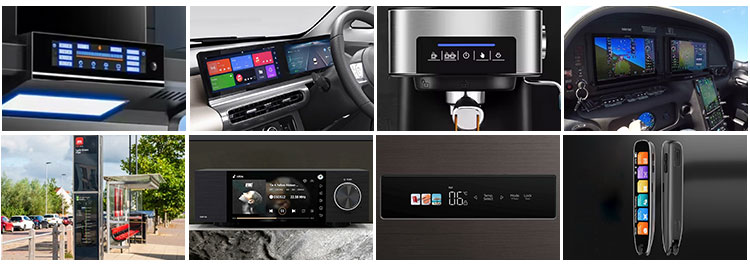Stretched LCD bar displays are a type of LCD (Liquid Crystal Display) with an elongated, typically narrow shape, and are designed to display information in a wide, horizontal format. These displays are often used for applications where space is limited or where the display needs to show continuous, real-time data across a wide area. They're called "stretched" because the aspect ratio of the screen is elongated, making it appear as a rectangular or bar-shaped display.

Key Features of Stretched LCD Bar Displays:
Wide, Elongated Aspect Ratio:
1. The defining characteristic of stretched LCD bar displays is their elongated, narrow shape. These displays have a wide aspect ratio, which means they are much longer horizontally than they are tall. Common aspect ratios are 16:3, 16:9, or even wider depending on the specific application.
2. Example: A typical stretched display might be 21 inches wide by 4 inches tall, making it ideal for specific use cases like scrolling text or real-time data.
High Brightness:
Like sunlight-readable displays, many stretched LCD bar displays are designed to be highly visible in a variety of lighting conditions, including environments with bright ambient light. Some models may have high brightness levels (500-1000 nits or more), ensuring visibility in both indoor and outdoor settings.
Narrow, Space-Efficient Design:
1. The narrow form factor of these displays makes them ideal for applications where space is limited but a wide visual output is still necessary. They can fit in tight spaces such as shopping malls, transportation hubs, control rooms, and industrial environments where traditional rectangular displays would be too bulky or space-consuming.
2. Example: Stretched displays are often mounted above counters, in narrow billboards, or as part of information panels in stores, showing dynamic content without occupying too much physical space.
High-Resolution Display:
1. Even though the display is narrow, many stretched bar displays are designed with high resolution to ensure that the text, images, or data displayed are clear and legible. They often have a full HD or even 4K resolution to deliver sharp content.
2. Example: A stretched LCD display used for advertisement screens or digital signage may have a resolution of 1920x480 or 3840x720 to deliver high-quality visuals.
Versatility and Flexibility:
1. These displays are highly customizable and can show a variety of content, from text scrolling across the screen to static images or dynamic multimedia content. The flexible design makes them suitable for both informational displays and advertising.
2. Example: Stretched displays can show stock prices, public transportation schedules, weather updates, or advertising content in airports, train stations, or shopping centers.
Landscape and Portrait Orientation:
1. Although most stretched LCD bar displays are designed for landscape orientation, they can sometimes be configured to display content in portrait mode depending on the application.
2. Example: A stretched display can be installed on a wall or in a display case, either horizontally or vertically, to best fit the design of a space.
Energy-Efficiency:
1. Depending on the technology used (e.g., LED-backlit LCDs), stretched LCD displays are designed to consume less power, which is an important feature in digital signage applications where displays need to run for long hours without excessive energy consumption.
2. Example: Outdoor advertising boards and control room displays using stretched bar LCDs are built to minimize power consumption while maintaining visibility.
Touchscreen Functionality (Optional):
1. Some stretched LCD bar displays come with capacitive touchscreen capabilities, allowing users to interact with the display. This feature is often used in interactive kiosks or wayfinding systems where users can touch the screen to get more information or interact with the content.
2. Example: Interactive digital signage in shopping malls, museums, or public spaces often includes a stretched touchscreen display to provide a more engaging user experience.
Durability:
1. Many stretched LCD displays are built with durable materials that can withstand the wear and tear of continuous use, especially in public or industrial environments. Some are even weather-resistant for outdoor installations.
2. Example: Public transportation signs and industrial control panels often use rugged, long-lasting stretched displays to ensure longevity and reliability in tough conditions.
Connectivity Options:
1. These displays typically come with a variety of input options, such as HDMI, VGA, USB, or DisplayPort, allowing them to be easily connected to external devices or media players for content display.
2. Example: Digital signage systems using stretched displays might connect to a media player or content management system (CMS) to display dynamic advertisements or real-time information.

Applications of Stretched LCD Bar Displays:
Digital Signage:
1. Retail Stores: Stretched LCD bar displays are commonly used in retail environments for dynamic content such as promotions, branding, and advertisements. They can be installed above checkout counters, on walls, or in windows.
2. Transportation Hubs: Airports, bus stations, and train stations often use stretched displays to show real-time travel information, schedules, and announcements.
3. Public Spaces: Stretched displays are ideal for showing public information like weather updates, announcements, or advertisements in shopping malls, stadiums, and conference halls.
Control Rooms:
1. In control rooms (e.g., security monitoring, command centers), stretched LCD bar displays can be used to show important data such as live feeds from surveillance cameras, real-time alerts, and other key information that needs to be viewed continuously in a wide format.
2. Example: Surveillance systems in public safety or utilities monitoring may use these displays to show long, scrolling lists of live data or metrics.
Wayfinding and Information Displays:
1. In museums, universities, or theme parks, stretched LCD bar displays are used as wayfinding signage to provide directions, event schedules, or other useful information in a clear and concise way.
2. Example: Airport terminals use stretched displays for showing flight information, gates, and boarding times in a continuous or scrolling format.
Advertising and Branding:
1. Stretched LCD displays are often used for outdoor advertising or in-store marketing. Their narrow form allows them to fit into smaller spaces while displaying vibrant, eye-catching content.
2. Example: Billboards, bus shelters, or interactive touchpoint displays in high-traffic areas often use stretched LCD screens for effective advertising.
Automotive Dashboards:
1. Some advanced automotive dashboards or infotainment systems use stretched LCD bar displays for showing driving data, navigation information, and entertainment content in a narrow format that fits well within the dashboard’s design.
2. Example: Tesla’s infotainment screen or BMW’s head-up display may use stretched LCD bar screens to provide a continuous flow of information.
Gaming and Arcade Machines:
1. Stretched LCD displays are also used in arcade machines or gaming consoles for scoreboards, live stats, or game instructions. The wide format allows more information to be displayed in a visually appealing way.
2. Example: Arcade scoreboards or interactive games with live updates on progress use stretched LCD displays for a more immersive experience.
Advantages of Stretched LCD Bar Displays:
1. Space-Efficiency: The narrow form factor makes these displays perfect for locations where space is limited, like above counters, in kiosks, or in crowded environments.
2. Continuous Information Display: They are ideal for showing real-time, scrolling, or continuous content, which is essential for dynamic signage or data-driven applications.
3. Versatile Applications: Their ability to show a variety of content (text, images, video) in both commercial and industrial applications makes them highly adaptable.
4. Enhanced Visibility: High brightness and anti-glare coatings ensure that these displays remain visible in bright or high-traffic areas, increasing their effectiveness.
In summary, stretched LCD bar displays are specialized displays designed for environments where space is limited but wide-format content is still required. They’re commonly used in digital signage, control rooms, advertising, wayfinding, and industrial applications. Their narrow, high-brightness design and flexible content options make them ideal for displaying real-time data, scrolling text, and promotional content in dynamic, space-efficient formats.
Stretched Bar LCD Displays Custom LCD Solutions for Diverse Applications
Brightness from 0-3000 for perfect display effect achievement. 100% NTSC makes the vividness of the picture better and the color transition in the picture more natural.
Color Temperature is positive white at around 5500K, warm white (yellowish) at 3500K and also cool white (cold) at 6500K.
Driver circuit with sufficient voltage and current values to meet output requirements and reduce the secondary development cycle.
Heat dissipation for high-brightness products to advance design of reasonable heat dissipation structure.
Power consumption, we increase the brightness without increasing the power consumption.
Cables, Backlighting also requires cables, either through an FPC connected to the LCD's FPC and controlled through a port, or a separate cable that controls it through a connector.LED life reached the standard of 30K hours Min. 50K, 70K, 100K hours are all achievable. 
Stretched LCD Bar Displays Touch screen,standard type and customization 
Stretched Bar LCD Displays Driver board/adapter board, standard type and design customization
DEMO board, H-DMl board, other customized board, etc.

Stretched Bar LCD Displays Embedded Integrated Solution
UART display solution, H-DMl display solution, Window display solution, Android display solution, Raspberry Pi solution, portable secondary screen solution, etc.